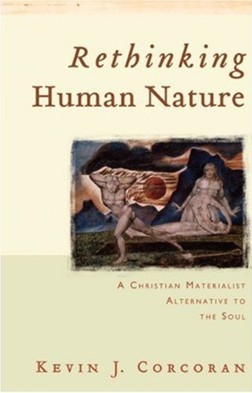
Today we wrap up our discussion centered on Kevin Corcoran’s book Rethinking Human Nature: A Christian Materialist Alternative to the Soul
where he develops a constitution view of human persons. We will look at the fifth and sixth chapters: I believe in the Resurrection Body and the Life of the World to Come and The Constitution View and the Bible.
This leads to a couple of questions that have come up in comments on previous posts on this book – how do we understand resurrection and what happens between death and resurrection.
One commenter noted:
In previous threads on this book we’ve raised and briefly discussed
the question of how Corcoran’s view deals with the “in-between” state
that (all? most?) Christians believe exists, between our physical death
and bodily resurrection. Where, and What, are we?Besides “it’s a mystery” (which I grant) I’ve yet to see anything
offered even as a hypothesis, that would allow reconciliation of even a
Constitution View, with Jesus’ statement to the thief on the cross that
“Today you will be with me in Paradise.” Both Jesus’ body and the
thief’s body stayed on earth and were disposed of/buried. So who/what
are the “you” and the “me” in Jesus’ statement?
Corcoran admits that this is something of a conundrum.
When I talk to Christian Dualists about the afterlife, I am frequently met with something like the following response:”Wow, am I ever glad I’m a dualist! I mean, what ever the problem with dualism, at least we don’t need any wacked-out metaphysical prestidigitation to make sense of postmortem survival.” If the issue is simply one of postmortem survival, then I admit that dualists have a much easier time accomodating such a doctrine. (p. 133)
But Christians don’t believe in postmortem survival alone. The Christian doctrine is a doctrine of resurrection, not
reincarnation, and a doctrine of bodily resurrection not disembodied
existence. Bodily resurrection is a mystery – but it is a mystery for both dualists and materialists, or so Corcoran claims. This is the topic I would like to discuss today.
How do you understand resurrection – or the time between death and resurrection? What are the implications for our Christian understanding of the essence of human persons – as either dualist or materialist?
Another commenter brought up 1 Cor. 15 asking:
Does he interact with 1 Cor 15:35ff, about the natural body being sown
and a spiritual body being raised? I have always read this assuming
that the body was part of the person but not the person – the person
could be separate from the “natural body”. Perhaps there are ways to
read 1 Cor 15 that are amenable to the CV?
Both the resurrection of Jesus and the discussion in 1 Cor. 15 lead to
a conclusion that there is a causal connection between the original
body and the glorified and perfected spiritual body of the resurrection. The resurrection of the body is a problem for a dualist view of human persons.
Thomas Aquinas believed that the soul exists in a temporarily disembodied form between death and resurrection. This soul “organizes
both the matter that composed the body before death and the matter that
will compose the body after death. Same soul; therefore same body.“
Aquinas, as Corcoran points out, recognized the need to account for the sameness of the resurrection body. But the account seems somewhat lacking. The soul (if there is a soul) cannot be poured into just anything. The resurrection body is causally connected to the original body. Jesus’s resurrection body was causally connected with the crucified body.
Corcoran concludes:
In the end, I find the arguments for a dualistic anthropology to be flawed. If the Old and New Testaments do in fact teach that there is an intermediate state of conscious existence, this in no way entails dualism. The fact that we have found dualism taught in the Bible may have more to do with the conceptual framework in which we have read it (a context that fails to allow for an intermediate state of bodily existence) than what it actually teaches. (p. 144)
Biblical references to soul can be read in a dualistic fashion – but need not be read in such a fashion. To love God with heart, soul, strength, and mind means to love God with our whole being – not that there are separable parts of our being. The same for passages like 1 Thess. 5:23. But what does it mean to be away from the body and at home with the Lord (2 Cor. 12:2)? Corcoran suggests that such passages do entail a split – as does resurrection itself, but they do not entail a disembodied existence.
But proof texts do not rule the day —
The most important question is not What does this text teach about the human person? but How should we understand this text within the whole narrative of God’s Word? The whole narrative, from creation to new creation, seems to be one of embodiment and materiality. (147)
I agree – the whole story is one of embodiment and materiality from Genesis through Revelation. The new heaven and new earth is not an immaterial wisp any more than the first creation. And there is a causal connection in creation and in the embodiment of human persons. Shades of N. T. Wright in much of this discussion.
Despite the title there has not been much science in this post, and I
don’t think that science has much to add – except that the evidence is
in agreement with humans as embodied material creatures. This has some significant ramifications for how we live the Christian life and grow in Christian virtue.
What do you think? Is the whole story is one of embodiment and materiality – a story that should help form our understanding of the nature of human persons, the bodily resurrection, and the life to come?
If you wish to contact me, you may do so at rjs4mail[at]att.net

